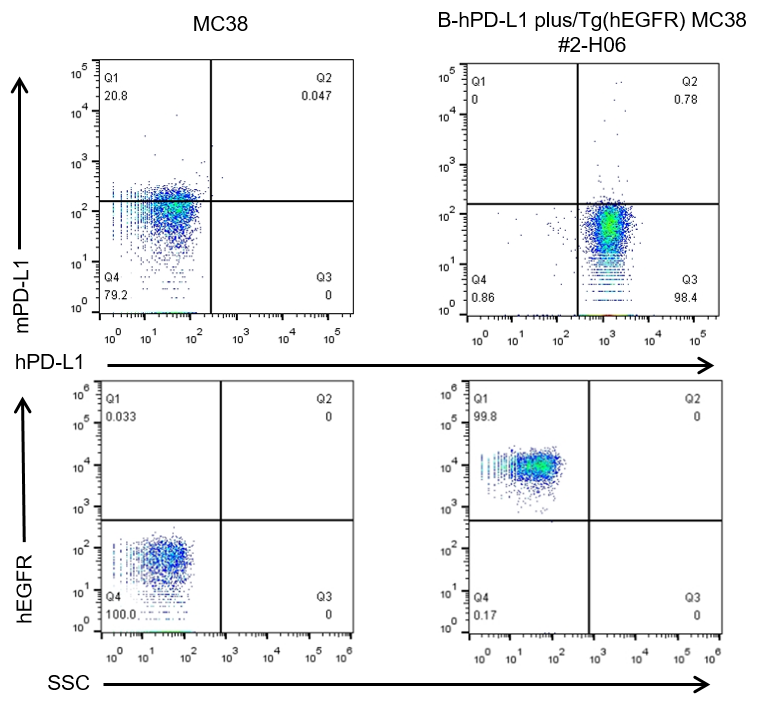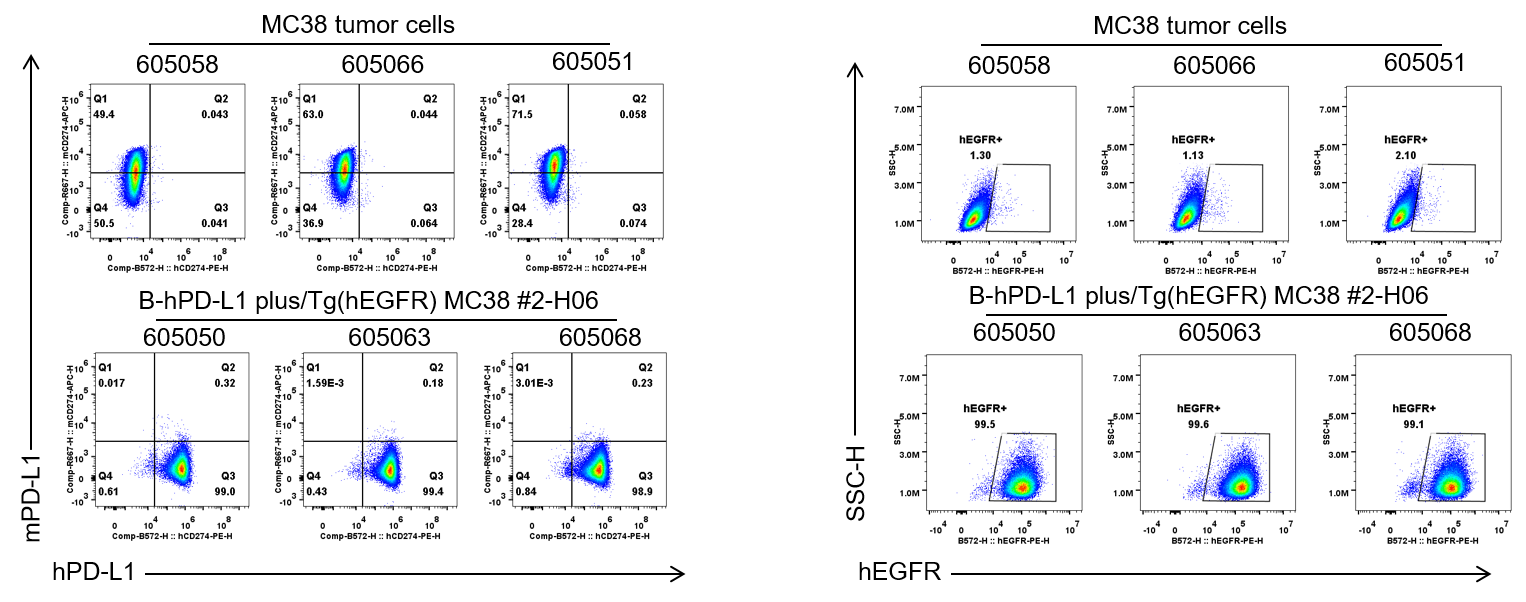
• 322357

| Product name | B-hPD-L1 plus/Tg(hEGFR) MC38 |
|---|---|
| Catalog number | 322357 |
| Strain background | C57BL/6 |
| NCBI gene ID | 1956,29126 (Human) |
| Chromosome | 19, 11 |
| Aliases | B7-H; B7H1; PD-L1; PDCD1L1; PDCD1LG1; PDL1; hPD-L1; ERBB; ERBB1; HER1; NISBD2; PIG61; mENA; hPD-L1; ERBB; ERRP; NNCIS |
| Tissue | Colon |
| Disease | Colon carcinoma |
Inoculated cell lines can be suspended with DMEM stock solution.
Before implementing the project, it is recommended to perform tumor growth experiments. The recommended cell inoculation amount is between 1E5-5E5.
In the experiment, it is necessary to ensure that the number of animals inoculated subcutaneously is at least 1.6 times the actual grouping number.

PD-L1 and EGFR expression analysis in B-hPD-L1 plus/Tg(hEGFR) MC38 cells by flow cytometry. Single cell suspensions from wild-type MC38 and B-hPD-L1 plus/Tg(hEGFR) MC38 #2-H06 cultures were stained with anti-EGFR antibody (Biolegend, 352906) and anti-PD-L1 antibody (Biolegend, 329706; Biolegend, 124312). Human PD-L1 and human EGFR were detected on the surface of B-hPD-L1 plus/Tg(hEGFR) MC38 cells but not wild-type MC38 cells.

PD-L1 and EGFR expression evaluated on B-hPD-L1 plus/Tg(hEGFR) MC38 tumor cells by flow cytometry. B-hPD-L1 plus/Tg(hEGFR) MC38 cells were subcutaneously transplanted into B-hPD-1 plus/hPD-L1/hEGFR mice (n=6). Upon conclusion of the experiment, tumor cells were harvested and assessed for EGFR (Biolegend, 352904) and PD-L1 (Biolegend, 329706; Biolegend, 124312) expression by flow cytometry. As shown, human PD-L1 and human EGFR were highly expressed on the surface of tumor cells. Therefore, B-hPD-L1 plus/Tg(hEGFR) MC38 cells can be used for in vivo efficacy studies evaluating novel EGFR therapeutics.

Subcutaneous tumor growth of B-hPD-L1 plus/Tg(hEGFR) MC38 cells. B-hPD-L1 plus/Tg(hEGFR) MC38 cells (2×105) and wild-type MC38 cells (5×105) were subcutaneously implanted into B-hPD-1 plus/hPD-L1/hEGFR mice (female, 7-week-old, n=6). Tumor volume and body weight were measured twice a week. (A) Average tumor volume. (B) Body weight. Volume was expressed in mm3 using the formula: V=0.5 × long diameter × short diameter2.